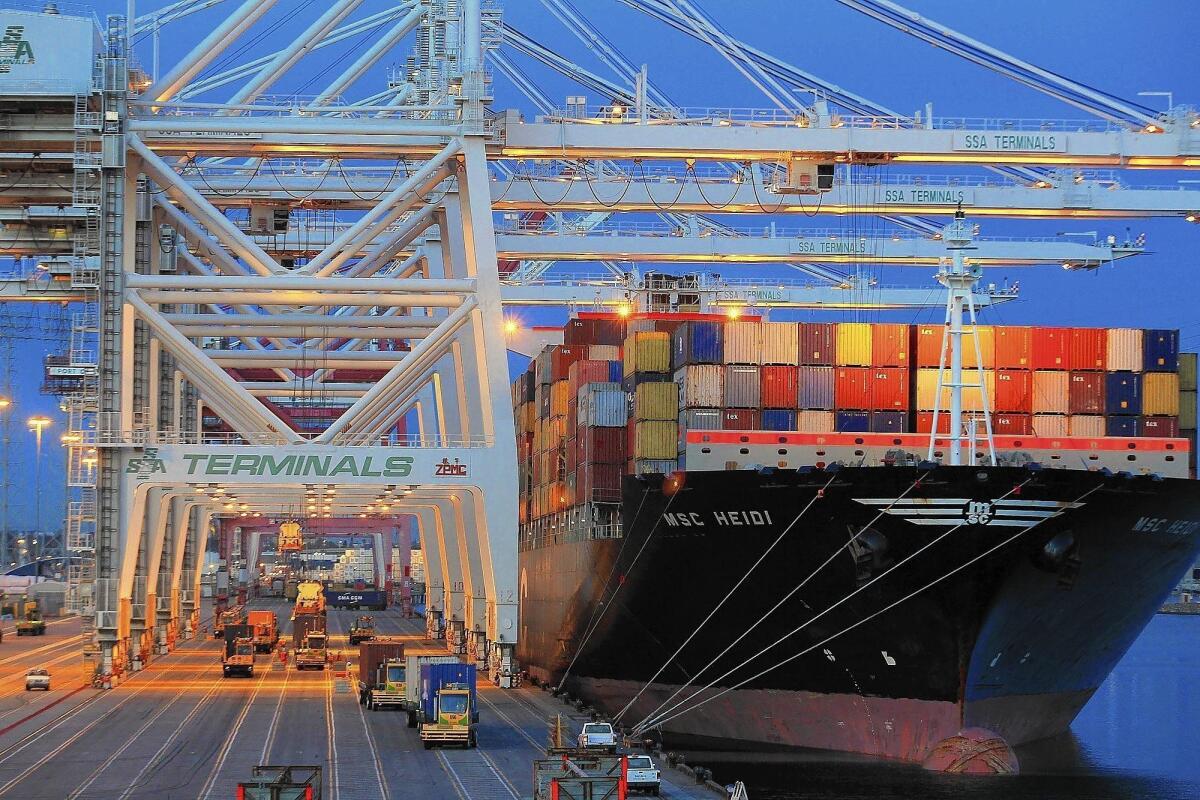Report: Chinese tourism to L.A. quadruples; trade, population surges

- Share via
China’s influence in the Los Angeles economy has boomed in the past four years, according to a new report from the Los Angeles County Economic Development Corp.
Tourism nearly quadrupled to 570,000 tourists last year from 158,000 in 2009, making China the top source of foreign travelers into Los Angeles. The influx is fueling an upswing in new development in the San Gabriel Valley.
The local Chinese population is the largest of any county nationwide, rising nearly 15% from 2008 to 413,000 residents in 2012.
More Chinese students come to Southland universities than to any other pocket of American universities – 10,000 pupils last year, up from 3,000 in 2009. Add community college students and the figure rockets to 20,000 Chinese attendees.
USC has the most Chinese enrollees in the nation, followed by UCLA.
“The futures of Los Angeles and China are inextricably tied together,” according to the LAEDC report.
The sentiment is underscored by the Southland’s trade relationship with the Asian giant.
Some 45% of the imports and exports between the U.S. and China pass through Los Angeles, according to the LAEDC. Nearly 60% of the activity at the San Pedro Bay ports – the 9th busiest system worldwide – is attributed to China.
Across the Los Angeles Customs District, Chinese trade is valued at $221.4 billion. Overall, the customs district saw a record volume valued at $414.5 billion last year.
Some 14.6 million containers passed through the Los Angeles and Long Beach ports last year; 15.4 million will arrive and depart this year. Next year, the system will clock 16.3 million containers.
Behind China, other top Los Angeles trade partners include Japan, South Korea, Taiwan and Germany, according to the LAEDC.
China is in the process of an economic transition sometimes known as the Great Rebalancing Act, driven by rising wages and a middle class set to nearly double in less than a decade.
The country, the world’s largest exporter, is stemming the outflow of cheaply made goods across its borders. Instead, the nation – already the second-largest importer globally – is trying to boost internal consumption and higher-level production and services.
In the 80 countries for which China is either the top or second-most substantial trading partner, the shift has huge implications.
See the U.S.: Exports overall are expected to grow 5% both this year and next, having finally breached the $2 trillion mark last year. Imports are forecast to increase 2% in 2014 and 5% in 2015.
In Los Angeles, exports to China are rising. The measure catapulted 52% in four years to $35.4 billion last year, with fewer deliveries of waste and scrap and more orders of electronics and machinery.
Imports still outweigh exports five to one, with some $186 billion in Chinese goods and services unloaded in Los Angeles last year.
But the LAEDC report sees increasing opportunity for Chinese investment in the Southland, especially in industries such as real estate, green technology and e-commerce.
The number of Chinese-owned businesses in the county doubled to 254 L.A. County and SoCal – the largest transportation node in the U.S.
In a separate report released simultaneously through its Kyser Center for Economic Research, the LAEDC predicted steady job and personal-income growth for the county and Southern California region.
The Los Angeles unemployment rate has fallen from 10.9% in 2012 to 8.7% last year and is expected to slide to 7.8% in 2015. The county has averaged an 8% jobless rate since 2000.
Across the bottom half of the state, employers are adding jobs.
Orange County’s 5% unemployment rate in April is below its long-term 5.6% average. The Inland Empire’s 8.3% rate matches its historical level.
But better economic news – rising home prices and personal income – will drive job seekers back into the labor force, slowing down improvements in jobless rates, according to LAEDC. Private sector head counts will increase with the expansion of manufacturing and financial activities businesses. Government positions will remain flat or increase slightly.
New home construction in Southern California will surge substantially but fail to meet the historical average. Commercial real estate will struggle, with low lease rates and high vacancy in office spaces and sparse new construction.
But industrial facilities, particularly in the Inland Empire, are a different story. Demand is high for units and building projects are launched regularly.
More to Read
Inside the business of entertainment
The Wide Shot brings you news, analysis and insights on everything from streaming wars to production — and what it all means for the future.
You may occasionally receive promotional content from the Los Angeles Times.











